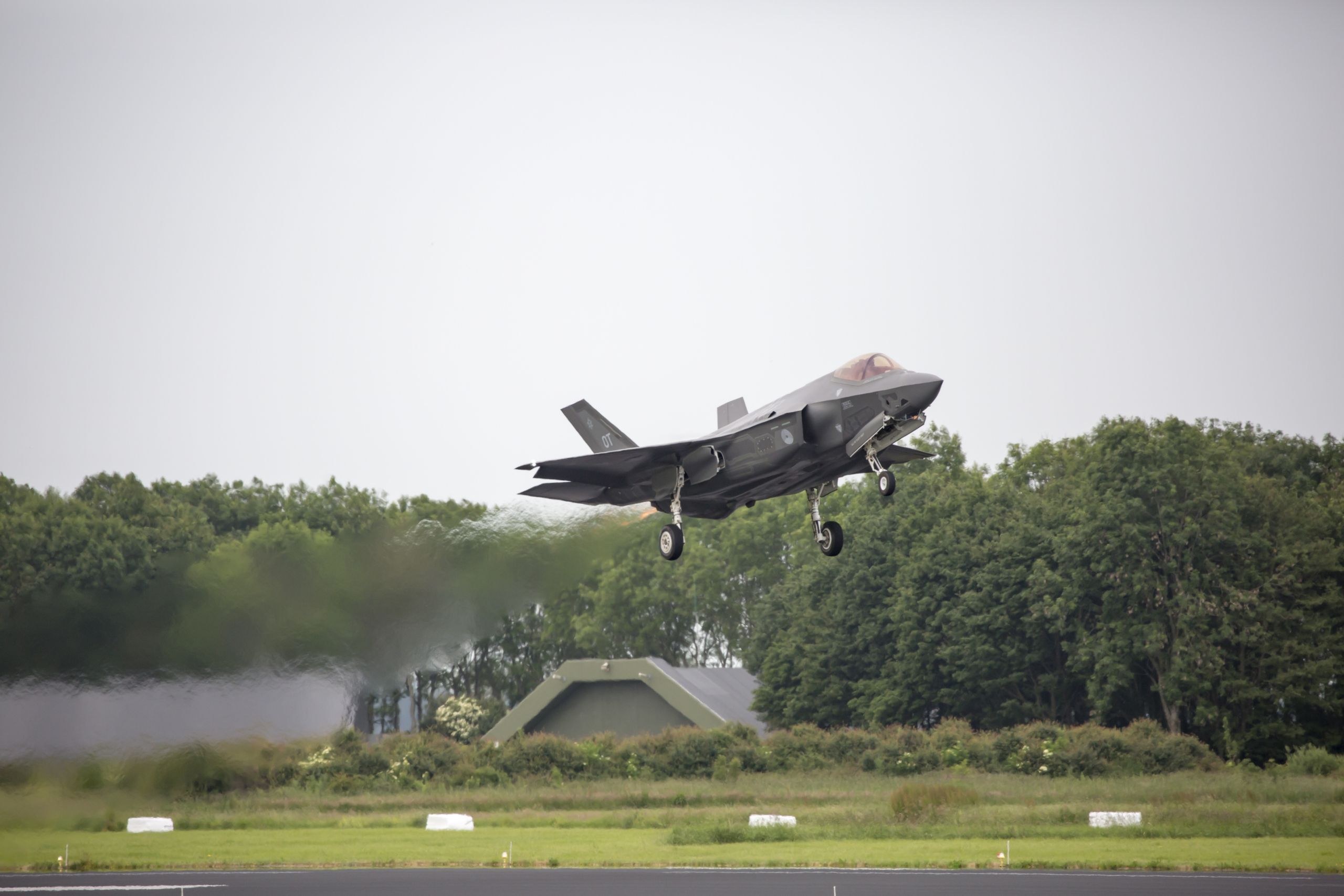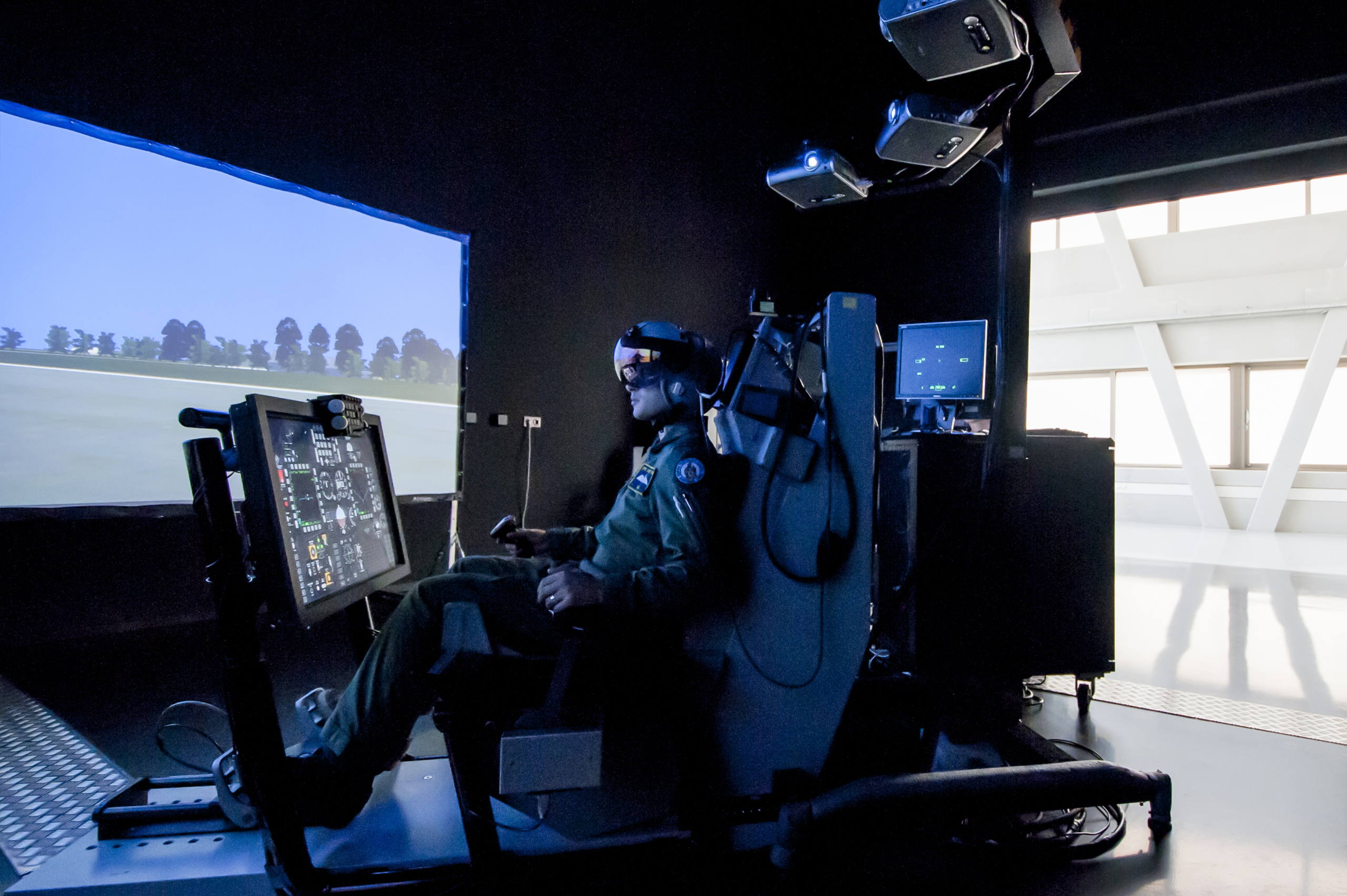Safety in the skies and in space
Programme leader Arnaud van Kleef on the Future Air & Space Power knowledge programme
What does the future look like in the air and in space? And what does that mean for military deployments and for the safety of our country? Various developments are underway both in the air and in space that affect the safety and the working methods of the Defence Department and security services. The NLR knowledge programme Future Air & Space Power (FASP) is studying innovations in this area, helping to create a safer society.
What does the FASP knowledge programme entail?
“If we’re going to keep the Netherlands safe, we need to know what could threaten us and how we can defend ourselves against it. New systems and technology such as satellites, drones and cybersecurity are important areas of research for that. In the FASP programme, we do research aboutsolutions that help create a safer society. We do a lot of the studies and projects in this programme together with the Defence Department and the Ministry of Justice and Security.”
“The programme consists of three main tracks that overlap a lot with each other. The first track is air power, where we look at military developments in the aerial domain. The programme also focuses on space power; this track is largely about military developments in space. This is a growing domain for the military because the threats from space and dependency on it are increasing. Finally, education and training are a key part of the programme. This component focuses in particular on educating and training people in the armed forces, the security services and the police, letting them adapt to changing circumstances and work efficiently.”
About the programme leader
Arnaud van Kleef is an R&D space engineer who has been focusing on various space-related studies and projects for years. As the programme leader of Future Air & Space Power, he is committed – as is his team – to gathering knowledge and converting it into technological developments for a safe society.
From digital developments such as cybersecurity and the use of artificial intelligence (AI) through to more efficient systems in the aerospace domain: he sees it all in his versatile field of work. He connects internal and external projects and cooperative ventures to get innovations going.
What is the social impact of the programme?
“NLR supports the Defence Department in making informed choices about equipment and the use of personnel at operational and tactical levels. On top of that, we give advise to help make the planning and execution of military operations safer and more effective. Moreover, we assist the Defence Department and the security authorities in preparing for a changing world. We do research about how processes can be made safer, more efficient and more effective. New technology such as artificial intelligence and machine learning plays an increasing role in this. The impact of this technology can be huge, both positively and negatively.”
“The strength is mainly that it can combine existing and new technology. Making smart use of it can let us stay a step ahead of our opponents. To remain at the forefront, it is important to connect all the individual studies and developments integrally. Both internal and external cooperation are crucial.”
“Committed to gathering knowledge and converting it into technological developments for a safe society.”
Space power: a link between the air and space domains
“Space is playing an increasingly important role in the defence of a country. Compared to the aerial domain, space has one big advantage: you can fly a satellite over a country, which you can’t just do with a plane, as that violates a country’s sovereignty. A country can use satellites to collect intelligence relatively easily.”
“Satellites in space can support planes in the air, helping make the correct decisions and letting them deliver the desired effects. If you want to fly over a hostile area with a plane, you want to know what threats there are. We can identify that threat from space. The information goes from the satellite to an F-35 or MQ-9 Reaper, for example. That’s something the pilot can then take into account. In the future, information could even be sent from the satellite to a drone, for example aiming to collect further information. The drone can then fly and carry out tasks autonomously using AI – always within set frameworks, of course. NLR’s research tests and explores these FASP concepts to prepare for future operational usage through CD&E.” (Concept Development & Experimentation)
Air power: manned and unmanned craft complementing each other
“In 2025, when the current strategic NLR programme finishes, we’ll present an FASP showcase. We’ll be focusing mainly on autonomous swarm technology for drones to support other units in the aerial domain and elsewhere. We are going to demonstrate this by actually flying with physical and virtual drones that can communicate with each other in an experimental environment.”
“Drones are already a powerful tool in war, as you can see currently in Ukraine. The drones are becoming more and more advanced. An important question is, of course, how we can effectively use a swarm of autonomous drones and get them to cooperate with a manned platform, such as an F-35. The drones can have various sensors and cameras, making the execution of operations safer for the manned aircraft.”
“We’re now going use this programme to investigate how exactly this could work. There are already various ongoing studies within NLR on, for instance counter-drones and the operational use of drones. These also involve other technology such as protecting the network that the drones and manned platforms use for communicating with each other. Combining knowledge lets us acquire new insights for the future.”
Education and training: people are central
“When it’s about the military, many people immediately think of heavy equipment. But the training and education of the people is also very important. Doctrines – the principles that determine how the armed forces are deployed – must be followed carefully to be effective. Training is crucial if planned operations are to proceed smoothly. At NLR, we develop new training capabilities, such as using virtual reality. We are also looking into new training methods such as simulations. That’s how we want to make the training more realistic and effective.”
What does the future look like?
“The way we wage war is going to change. Information is becoming increasingly important. We must use it efficiently to ensure safety. We’re doing lots of research into this, for instance in the Information-Driven Operations programme. I also think that the advent of new technology means that we are going to cooperate more across different domains within the military. That’s how we can develop smartly and use innovations as effectively as possible.”
Read more about all the NLR knowledge programmes.
Video: MilSpace2, a constellation of satellites that will fly in tandem



